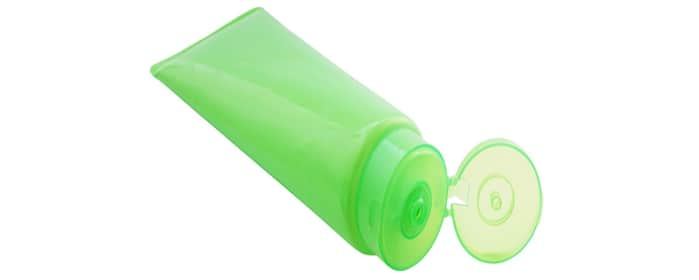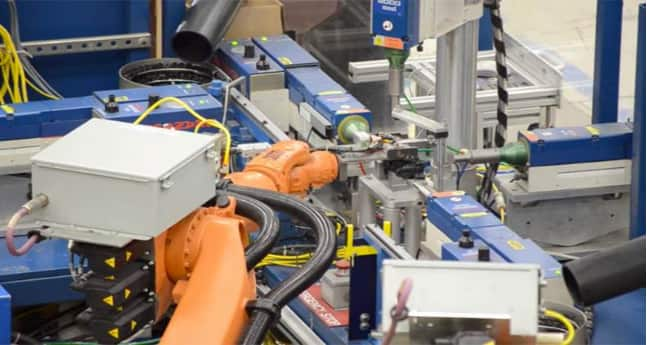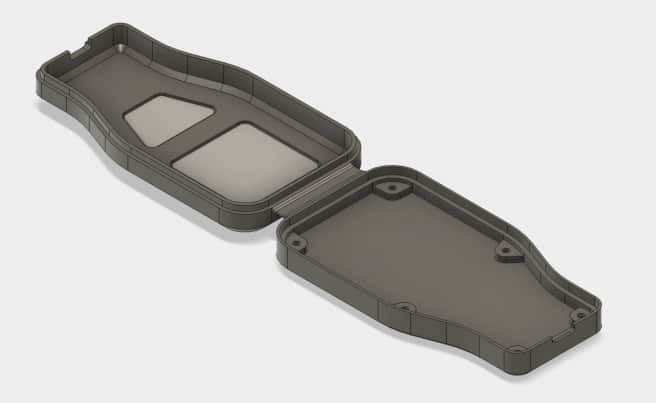In product manufacturing, hinges are common tiny materials used in making products that require opening and closing. Of the many types of hinges used in product manufacturing, living hinges are unique. Living hinge design comes as flexible plastics and is an important part of consumer products such as bottle caps, makeup products, and clamshell packaging.
The little detail that living hinge design provides is responsible for its ease of use and convenience we enjoy with these products. It is also easy to manufacture and incorporate into products to connect components of the same product. In this article, you get to know the basics of hinge design. This will include the plastic hinge, plastic hinge types, and a few hinge design guidelines that you can use to achieve a better manufacturing process.
What is a Hinge?

A living hinge or flexible hinge is a thin and flexible material used as a connector between an item’s larger and rigid plastic sections. It is a thin area in a plastic part that folds and straightens to allow the opening and closing of the material. The living hinge design is such that it allows the product to bend and straighten multiple times without losing strength.
The living hinge comes from larger plastic sections and forms a bridge between both components. However, unlike the larger plastic sections, the living hinge is rotatable or bendable about an axis, between 90 to 180 degrees, without cracking or breaking.
It has a simple buildup and requires no assembly. It also serves as a flexible entity at a point in the material; usually, a container and a lid, opening and closing the material without losing its strength.
Types of Hinges

There are four different plastic hinge types used based on their design and strength. They are ideal for opening and closing without cracking or permanent failure in product parts.
· Flat Hinge
The flat hinge, also known as the straight hinge, is the simplest and most common type of living hinge design. It has a thin hinge section with two straight strips on both sides.
The flat hinge design is a flexible hinge and can bend up to 180 degrees and can connect two rigid plastic sections.
· Double Hinge
The double hinge has two flat hinges separated by a thin landing strip. The double hinge is a more flexible hinge that allows up to 360 degrees rotation and is useful in creating spaces between two connected parts.
· Butterfly Hinge
The butterfly hinge is applicable in dispensing caps due to its flipping action. It is a more flexible hinge than the flat and double hinge. It possesses an ability to spring back when it is opened beyond a certain angle, flipping the cap to an opened or closed position.
· Bi-stable Hinge
The bi-stable hinge design is simply a butterfly hinge with three hinged sections and it is the most flexible hinge type. Like the butterfly hinge, the bi-stable hinge has a spring-back action when it reaches a certain angle. However, its added hinge sections allow for stronger opening and closing actions.
Importance of a Living Hinge Design
Living hinges are important parts of many products due to several advantages they add in terms of functions and aesthetics. Below are a few reasons you should include one in your product design.
· Eliminates Assembly
Conventional metal hinges require assembly and fastening with a screw. However, the living hinge allows the hinge to come from the same material as the product. Therefore, it is possible to directly incorporate it into the product components.
· Reduces Cost and Time
A living hinge design is simple and provides a cheaper alternative to conventional hinges. Its ability of easy incorporation into a product eliminates the need for assembly. Therefore, reducing cost and time.
· No Maintenance Required
Living hinges come directly from plastic materials. Therefore, they do not rust or have other degradative reactions to the environment. Hence, they require no maintenance and can last for extended periods.
· Flexible
Living hinges are flexible hinges with designs that can accommodate complex motions more sophisticated than the simple open and close motion of conventional hinges.
How To Make a Living Hinge Design (Production Methods)

There are 4 common methods of producing hinges. Each method is unique and dependent on the intended purpose and the type of material used. Below are the methods of producing living hinge design:
· Injection Molding Method
Injection molding is the most common way of producing parts with living hinges. It is fast, cheap, and allows for mass production of living hinges once you decide on the prototype or the final hinge design.
Injection molded hinge is the best option as it guarantees a quick turnaround and better-finished products. Polypropylene and polyethylene are the best materials to employ in making injection molded hinge as they are brittle yet durable enough to guarantee millions of flexes without breaking.
Hinge Design Guidelines to Incorporate During Living Hinge Design
- Maintain Uniform Wall Thickness
Non-uniform walls would result in the breaking of the living hinge design, due to the difference in the cooling of the plastic part. However, a uniform wall would not allow for the hinge design to be thin in the area that allows for flexibility and connecting of rigid parts.
Therefore, it is important to have a perfect balance of both.
- Flex Hinges
It is important to flex the hinges a few times after molding. It helps to cold-draw the hinge, thereby improving its bendability.
· 3D Printing Method
While Injection molding is the best method in creating an effective living hinge design, 3D printing is a quicker and more cost-effective technique used in producing living hinge design prototypes. This is because of its automated process.
3D printed hinges come from plastic materials such as Nylon. Hence, depending on the material, 3D prototypes do not have the same durability as the injection molded hinge.
They are brittle and they break when bent repeatedly. Nevertheless, they are ideal for testing the shapes and thickness of produced parts.
Hinge Design Guidelines to Incorporate During Living Hinge Design
- Thickness
When producing 3D printed living hinges, the material must be thicker than that injection molded hinge (possibly around 0.6mm). Although the hinge would be less flexible, the thickness would ensure the durability of the hinge.
- Orientation
When creating a 3D printed hinge design, the part’s orientation is important as it will ensure maximum hinge strength. The width of the hinge should be at a right angle to the build plane to ensure the building of the hinge layer by layer and avoid breaking.
· Urethane Casting Method
The urethane casting method is not common in product manufacturing as its products made via the process are less durable and more likely to break or bend.
Nevertheless, the method is good for creating prototypes before their actual production. It involves casting a rubber mold with low-durometer urethane resins, which creates prototypes that perform poorly against wear and tear.
· CNC Machining Method
Computer Numerical Control Machining is a method of producing metal design. However, in recent times, there has been a breakthrough in its use to produce living hinge design prototypes.
Compared to the Urethane Casting Method, CNC is best for producing durable living hinge prototypes as a proof of concept for a new design. With the CNC machining method, prototyping and design verification are possible and produce better and more durable prototypes.
Best Practices for Making a Living Hinge Design

Prototyping is an important practice you need in living hinge production as it allows the revision of living hinge design until the achievement of a product that functions according to specifications.
Below are some practices that product design experts must consider in making a hinge.
– Hinge Design Should Be Thin and Flexible.
A thick living hinge may appear stronger, but it is more susceptible to breakage during application as it is not flexible enough to accommodate stress or strain. Therefore, you should make the hinge design thinner and flexible.
– Use Radiused Corners
Avoid sharp corners in the mold, as they increase the stress on the hinge design in the mold. This will further reduce the durability of the living hinge.
– Choice of Material
The efficiency of a living hinge is dependent on the material used. Therefore, your choice of resin used must flow freely through thin areas in the mold. It must also not reveal stress cracks when you flex it after cooling.
– Gate Placement
The location of the gate should be on the hinge’s center. This will ensure an even distribution of the resin across the mold. It will also guarantee consistency in the formation and cooling of the hinge design in the mold. Therefore, forming better and durable living hinges.
– No Long Hinges
No hinge should be longer than 6 inches. If the design requires longer hinges to accommodate the product. You should break the long hinge into smaller parts as this would increase shell life and prevent the breaking of the living hinge.
Conclusion
A living hinge design is an essential process in product manufacturing related to consumer products, electrical junction boxes, and door hinges. This article provided a simple breakdown of the process. However, using the services of an expert can be what puts you on an edge over competitors in terms of aesthetics and functionality. This is where we at RapidDirect come in as we provide free DFM analysis and professional suggestions for your design. You can upload a CAD file and get an instant quote. However, if you have a problem, you can consult with our support team for manufacturing advice.
FAQs
The best method for producing a living hinge design depends on the intended purpose of the living hinge. Some methods are best for making prototypes, which others are best for producing mass samples of the same product. Therefore, the choice of method should also be based on the purpose of the living hinge.
A living hinge should be small and sizable enough so that you can incorporate them into parts. Its sturdy features make it extremely durable. Therefore, it can withstand several openings and closings without breaking.


